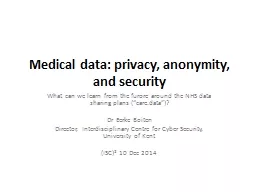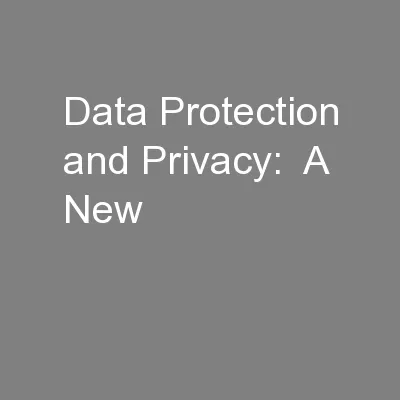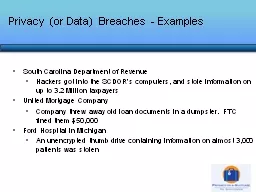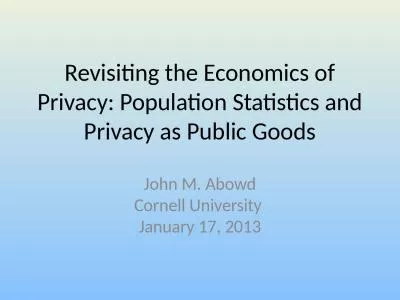PPT-Data Privacy 1 SADET Module D5:
Author : WiseWhale | Published Date : 2022-08-01
Data Privacy Dr Balaji Palanisamy Associate Professor School of Computing and Information University of Pittsburgh bpalanpittedu Slides Courtesy Prof James Joshi
Presentation Embed Code
Download Presentation
Download Presentation The PPT/PDF document "Data Privacy 1 SADET Module D5:" is the property of its rightful owner. Permission is granted to download and print the materials on this website for personal, non-commercial use only, and to display it on your personal computer provided you do not modify the materials and that you retain all copyright notices contained in the materials. By downloading content from our website, you accept the terms of this agreement.
Data Privacy 1 SADET Module D5:: Transcript
Download Rules Of Document
"Data Privacy 1 SADET Module D5:"The content belongs to its owner. You may download and print it for personal use, without modification, and keep all copyright notices. By downloading, you agree to these terms.
Related Documents














